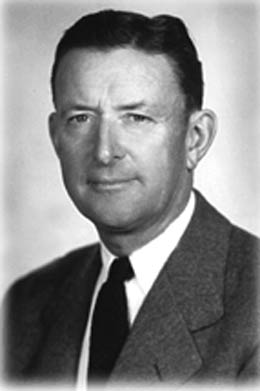Paul Pigott was president of Pacific Car and Foundry Company from 1934 until his death in 1961, rebuilding the Seattle company from a "pile of rust" with 125 employees to one of the top 300 industrial corporations in the U.S. His energy, integrity, and success in business were matched by his philanthropy and leadership in charitable activities.
Steel man William Pigott (1860-1929) moved to Seattle from Trinidad, Colorado, in 1896. He marketed steel railroad products to loggers in the Northwest and in 1905 started Seattle Steel Co. and Pacific Car and Foundry Co. (so named in 1917).
A Seattle Childhood
Paul Pigott was born in 1900 and grew up on Seattle's Capitol Hill. He attended Broadway High School and graduated from Culver Military Academy in Indiana. He received a degree in metallurgical engineering from Stanford University. As a child and teenager, he worked summers at the Pacific Car plant in Renton, starting at tasks such as sorting and counting nuts and bolts. This early connection with the company made him regard it as a family business.
In 1924, the directors of Pacific Car voted to sell the company to American Car Manufacturing Co. Paul, a minority stockholder, cast the one vote against the move. He went to work for Wallace Bridge and Structural Steel Company, rising from sales engineer to assistant to the president. Pigott inherited his father's entrepreneurial spirit.
The Great Downturn
Under American Car, Pacific Car remained profitable until the Great Depression. Where Pacific Car received orders for thousands of rail cars in 1928, they received no new orders in 1930 and orders for just 35 in 1931.
Paul Pigott had always seen Pacific Car as a family enterprise and his feelings were shared by Seattle investors who saw the company as a local business. They took advantage of hard times and offered to buy Pacific Car and its Renton and Portland plants from American. American agreed on a price of $50,000. Paul Pigott became president and his brother William Jr. (1895-1947) became vice president.
Employment at "the car works" had fallen from 1500 in 1923 to 125 in 1934 and most of these 125 jobs were not full-time. Operations were minimal and the plants had fallen into a state of disrepair. A Seattle banker asked Pigott, "What did you buy that rust pile for?" Pigott replied, "Because I think I should furnish employment to the extent that I can."
Pigott worked at improving the company's fortunes and in 1935, it almost broke even. Pigott concentrated on upgrading the plant, hiring capable people, and diversifying its products. Until the market for rail cars improved, Pacific Car focused on equipment for loggers and miners. The acquisition of a steel company (originally founded in 1895 by William Pigott's ex-partner) put Pacific Car into the structural steel business. The company supplied steel for bridges, dams, and other New Deal public works projects. Landmarks such as Grand Coulee Dam (1938) and the Lake Washington Floating Bridge (1939) contain steel from Pacific Car. To save money for capital improvements, top executive salaries during this period were limited to $275 a month (considerably less than $3,500 in 2000).
Business picked up in the late 1930s and Pacific Car expanded. Orders for refrigerator cars came in and Pacific Car branched out to build buses and trolley cars.
Charles Lindeman of the Seattle Post-Intelligencer described Pigott as "headstrong, a man who assumes leadership of the party, instinctively ... without prior arrangement ...Pigott is impatient with people who cannot keep up with him -- mentally or physically."
War Years
When France fell to German forces in June 1940, the United States began to gear up for war. Pacific Car joined the war effort by supplying components for Boeing B-17 bombers, steel for new defense factories, as well as logging and mining equipment. In 1941 and 1942, Pacific Car built 926 Sherman Tanks for the Army, charging less for each tank than did any other manufacturer. Under Pigott, the company expanded to shipbuilding and ship repair at the Everett Pacific Shipbuilding and Dry Dock Company. In 1945, Pacific Car acquired Seattle truck manufacturer Kenworth.
An attorney for Pacific Car said of Pigott, "Paul was impatient about details. He knew where he was going and pointed in that direction and went there."
Pigott was active in other businesses too. He was a member of the boards of directors for Standard Oil of California (Chevron), Washington Mutual Savings, General Insurance Company (Safeco), Seattle First National Bank, Boeing, Metropolitan Building Company (Unico), and the Seattle Chamber of Commerce.
He directed substantial energy to the community as well. He was a regent for Seattle University and Stanford University, and gave generously to both institutions for buildings and educational programs. William Pigott Hall (1957) at Seattle University honored the memory of his father. William Pigott was one of the founders of the Seattle Blood Bank and United Good Neighbors. Pope Pius XI named him a Knight Commander of the Order of the Knights of St. Gregory.
Paul Pigott died from a brain tumor at the Mayo Clinic on January 23, 1961.
Under the leadership of Pigott's son, Charles M. Pigott (b. 1929), Pacific Car and Foundry became PACCAR Inc in 1972.

